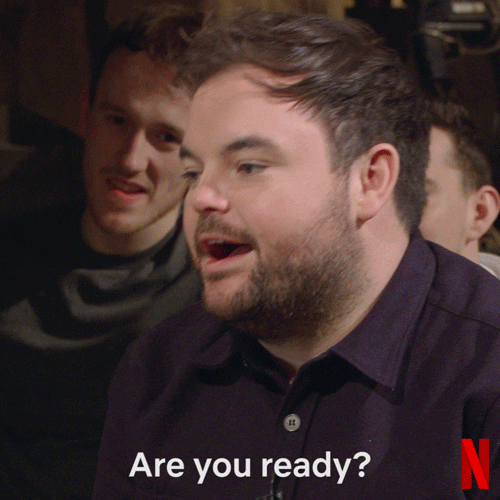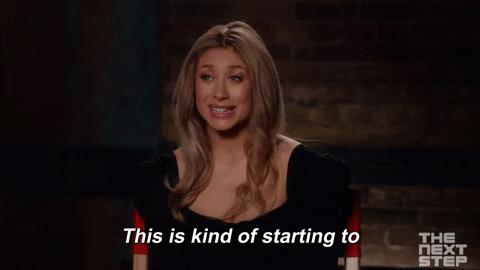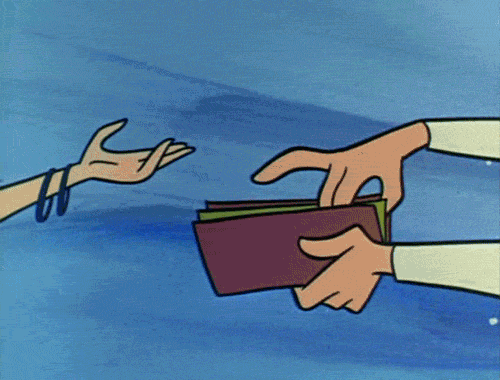Choosing a PR agency is a bit like dating. There’s a perfect partner out there for everyone – but not everyone is a perfect partner.
Finding the right PR agency for travel brands is a crucial decision that can greatly influence the success of your brand. But today, there are so many options available. Where do you begin?
Maybe you’ve only just started looking for PR representation, or you’re a brand new startup, or a hotel looking to dip a toe into the UK market – or you are unhappy with your current agency. Whatever the reason, choosing a PR agency can be hard.
But, while the choice may seem overwhelming, there are only a handful of key factors you’ll need to focus on. Get these things right, and you can look forward to a beneficial, long-term partnership.
In this comprehensive guide, we’ll walk you through these key factors, and outline the most important steps to choosing a PR agency – one that aligns with your goals, values, and vision.
Step 1: What do you actually need?
So, you’ve decided your travel brand needs PR representation.
Before we get into the granular detail of how to best choose the right agency for you – we need to go back to basics. What do you actually need?
Spending time evaluating this now will set you in good stead later down the line. So ask yourself; what do you want from your PR budget?

In order to know what you want from your PR budget you need to answer three questions.
Who is your audience?
Before you can dive into what you need, you have to first understand who you are speaking to. After all – it’s not what YOU want, it’s what your AUDIENCE need.
What drives them? What keeps them up at night? It’s no longer enough to know age, gender and location – people are driven by passions, and these passions are manifested differently on different platforms.
So, who you want to speak to – that will determine the publications they read, the media channels that they consume, the messages that resonate with them. (Hint: most brands THINK they know their audiences, but you’d be surprised how many have AHA moments when we do audience insights for them).
We once had a client who was spending a lot of money on influencer PR for their Instagram channel. When we did audience insights for the client we found that all of their customers were on Pinterest...the Instagram channel was beautiful, it just wasn’t read by the audience that actually books her trips. Another time a hotel client thought Conde Nast is where they should be featured, it turned out that their audience was much more likely to be on the Telegraph and the Daily Mail websites.
What do you want your audience to DO as a result of your PR activities.
Your PR strategy (or any marketing strategy for that matter) should bring about a change in behaviour in your target audience. “Get couples to book higher room categories”; “get single travellers to realise we are a great operator for those travelling solo”; “get families to realise the hotel isn’t just for "old people", but great for families, too”; "Rank for keywords xyz" (getting keywords to rank is no longer the preserve of SEOs, but increasingly PRs). All of this can be achieved and the more specific you are the more precise the quotes will be (and the more comparable they will be).
Therefore, it’s useful to sit down as a team internally and discuss what the end result of your PR campaign should look like. There’s a simple, but really useful framework and it’s explained beautifully in this LinkedIn Post.
We use it a lot in our client immersion workshops when we feel clients are a little stuck with what they want to get out of their marketing activity.
The elephant in the room: What’s your budget?
Some activities or channels are more expensive than others: Brand marketing activities are time consuming, so are big digital PR campaigns and that will be reflected in the budget. To recruit an agency to run TikTok is pricier than to recruit one that handles Instagram (again, think time consuming). Also, don’t forget most publications such as Conde Nast Traveller no longer just have print and online editions. Most have brilliant YouTube and social channels, too. Do you want to be featured on those, too – that means budget for video or a different style of press trip.
A good agency should guide you through the best way to spend your budget. As with all things, honesty is the best policy – tell your agency how much you’ve got and what you want to achieve and they will be able to make recommendations that best fit you. If you take simply ‘building awareness’ to your agency, with no budget and no target group, it’s like asking an architect to design a house without brief or budget – impossible to get right. We as an agency are always happy to work within a set budget, to utilise that budget to the best of our ability. We’re a friendly bunch, and we can work it out together.
Okay, so we’ve established some needs and set the scene. But before we dive in, this is the time to ask yourself an honest question…
Are you actually ready for a PR agency?
In order to get the most out of your PR agency, you’ll need to have assets, people and time.

You need someone in-house who has the time to liaise with your agency– especially at the beginning. Initially, there are lots of questions being asked, as your PR gets to know the brand. At Lemongrass we set up a “knowledge library” for each client so that in time we can pitch without bothering the client too much.
You’ll need to have all of your brand assets ready; photography, messaging, your website – everything that faces outwards or informs that external branding. If you don’t have it ready we do have a starter package for travel brands first dipping their toes into PR – that package getting you ready for PR and advising on best practice when it comes to assets, communication, messaging etc.
In our next blog post in this series, we’ll be exploring how to make the most of your PR agency. Stay tuned for more.
Step 2: Researching potential agencies
Now that you know what you want you can start researching. Research is vital. Any time spent now is time saved later – and you’ll get closer to your ideal PR agency partnership by putting in the research.
Word-of-mouth counts for a lot in PR, so if you know anyone in your industry who raves about their PR agency, see if they’re happy to make an introduction.
But if you’re starting your research completely fresh, Google is a valid place to start.

Black book approach or a holistic view on modern communications
Start by reviewing their websites and online portfolios. Assess their industry expertise and experience, whether they specialise in traditional PR or digital PR - or can deliver on both. Do they also offer social media and influencer marketing. These days the lines are often blurred and a holistic understanding of the wider marcomms landscape is important. A good PR agency in 2023 should have at least a basic understanding of SEO. If someone just talks about their amazing media relations and black book it’s time to think again in 2023.
Travel specialist or generalist agency?
Do you want a travel PR specialist or a general PR agency that looks after all kinds of sectors. Both have advantages and disadvantages.
Reputational risk and greenwashing
Communicating sustainability is becoming increasingly important – and many brands are afraid of greenwashing. Rightly so. Greenwashing is increasingly being called out. If your agency isn’t carbon literate they could cause you a lot of reputational damage. We are currently putting every team member through carbon literacy training to ensure our clients can be safe in the knowledge they don’t fall foul of the ASA (Advertising Standards Authority).
Similar challenges to yours
Check their client roster, and look through their travel PR case studies and campaign results, to see if they have solved similar challenges for clients that are like you.
Do you see yourself reflected in their client list?
Forever changing account managers? A look behind closed doors
And if you really want to get a feel for company culture, look them up on Glassdoor; an independent platform where employees rate their employers. This will give you an insight into how the agency treat their staff. Higher staff satisfaction means less turnover – which means consistent (and happy!) Account Managers. This in turn means you don’t have to constantly train up a new Account Manager on your brand.
Step 3: Dating 101 – Compatibility
You’ve made your shortlist, you’ve decided what services are most important to you, and you’ve found a handful of agencies who reflect your values, with a similar client list.
Great start! But now, it’s time to start dating.

Being great at their job is often not enough. You need to like who you’ll be working with.
Chances are you’ll spend a fair amount of time together, so you have to get on. And personality clashes are a sure-fire way to lose out on budget, and end the relationship in conflict. Reach out to your shortlisted agencies and start having some informal chats – again, like dating, you’ll quickly figure out who you like and who you don’t.
Do you want an agency to challenge you to innovate and thereby future proof business? To think of fresh ideas? Or would you prefer someone to support you and keep up the status quo?
Both are equally valid – but one style of agency will suit some people and not others.
And think about creative risk; whether you want to set your brand apart and run a campaign that may be award-winning, but carries an element of risk. To some people, that sounds like a dream. To others, it sounds like a nightmare.
While success is important, it's equally important to consider how an agency handles challenges and setbacks. Mistakes happen, but it’s up to the agency to take responsibility and rectify the situation. Evaluate whether the agency shares your values and if they will hold up their hand during difficult times. Building a strong partnership requires trust, accountability and a shared commitment to overcoming obstacles together – not finger-pointing and blaming.
Do you feel like this agency would come to you proactively if a campaign hasn’t landed? To try work it out together and to turn it around? PR isn’t advertising – not everything is a guarantee and there is always an element of risk. We at Lemongrass have a rule to proactively go a client if a campaign isn’t working. We then jointly work with the client on seeing if it can be re-angled effectively, or if we are better off starting from scratch.
Can you meet your potential new Account Managers? Do they seem professional, knowledgeable, proactive, hungry to learn - but also a good sport to work with? Do they specifically know your market? Do they have past experience they can draw on?
More often than not – your gut feeling is the correct one, and can steer you away from trouble.
Step 4: Strategy and approach
Understanding the agency's strategic planning process is essential. Can they talk you through a clear strategic planning process – and how do they plan to handle your account?
At this point, dating turns into something more formal, where you discover whether a great cultural fit can also deliver the results you need.
To get a good feel for your top agencies’ approach, you can:
- Assess whether they have a solid process in place for creating creative PR campaigns that deliver. If they can’t articulate that process things may turn a little chaotic (which some clients don’t mind – ours do, rightly so).
- Review their approach to media relations and outreach – for example, we prioritise not just speaking to Editors, but also including up-and-coming journalists, to give everyone a voice. Is that important to you? If yours is a brand that specifically speaks to a younger audience it’s in fact business critical.
- Consider if they can adapt strategies to suit your specific needs, even when faced with limited news opportunities – does your agency always ask you for news or can the create news from nothing or very little (read our blog post on how to create news from nothing).
- Ask of their awareness in other markets – can they help you with partner agencies in Europe or America, and do they understand why that is important?
You’ll be getting into the deep detail of who they are and what they can offer you, beyond promising great KPIs and placement in your dream publications. Can you see evidence that they can do what they say they do?
Now it’s time for the other big one… price. Can they work within your budget?
Step 5: Money, money, money

Sometimes, you might not get everything you want all in one contract, or within one year. It might mean getting a stripped back scope of work for the first year, to be able to quantify their approach and results.
Does the agency seem to be over-promising? If something is too good to be true… it usually is. We were recently invited to a pitch for a hotel group. We didn't win it. We were told we were too expensive and another agency said they could deliver everything within the budget, whereas we said we didn't think the scope would be do-able within the price. When we recently met with the CEO, they mentioned that the agency had taken staffing shortcuts in their delivery and they weren't hugely happy. Whilst we still love what the hotel group does, we are glad in hindsight that we stuck to what we believed was fair and reasonable. So do make sure you are not being oversold and under delivered, as it will only hurt your brand in the long-term.
It's all give-and-take, and any good agency will be able to advise you on where to best put your spend for best results. Obviously, there are some general differences – like big agency vs small, or international vs local – but this doesn’t always directly correlate to price. Price is incredibly subjective, very personal, and difficult to quantify.
Our key recommendation is not to be led by price alone, but to take it as part of the entire package. Do you like the agency? Their approach? Their skillset and their team? Then maybe the higher price is worth stretching for, if the payoff is great results and
a better working relationship.
Step 6: Measurement and reporting
Without measurement and reporting, you’ll never know if your PR efforts are successful. You need detail, accuracy and honesty above all else – but also clarity, and key information at a glance.
Look for agencies that have robust measurement and analytics practices. Understand how they track and report on PR activities.

Clear communication on what constitutes success will help both parties set realistic expectations. We often start our immersion workshops with new clients by asking “what does success look like to you?” for this exact reason.
We want to be clear on what the expectation is, from both sides.
Step 7: Making your choice…
Choosing the right PR agency requires careful consideration and due diligence. Look for compatibility, expertise, and a shared vision. Emphasise the importance of finding an agency that aligns with your company culture and values.
Remember – investing in a PR agency is an investment back into your brand. It’s an investment in your reputation and growth. Take the time to choose an agency that not only meets your immediate needs, but also has the capabilities to support your long-term communication goals.
With the right partnership, you can tell your brand's story and achieve your PR objectives – and hopefully, have fun doing it.
Lemongrass – the PR agency for travel brands
Ready to start your PR agency research? Let’s talk about your travel brand and your goals. Send a message to grow@lemongrassmarketing.com – or call 01865 237990.

